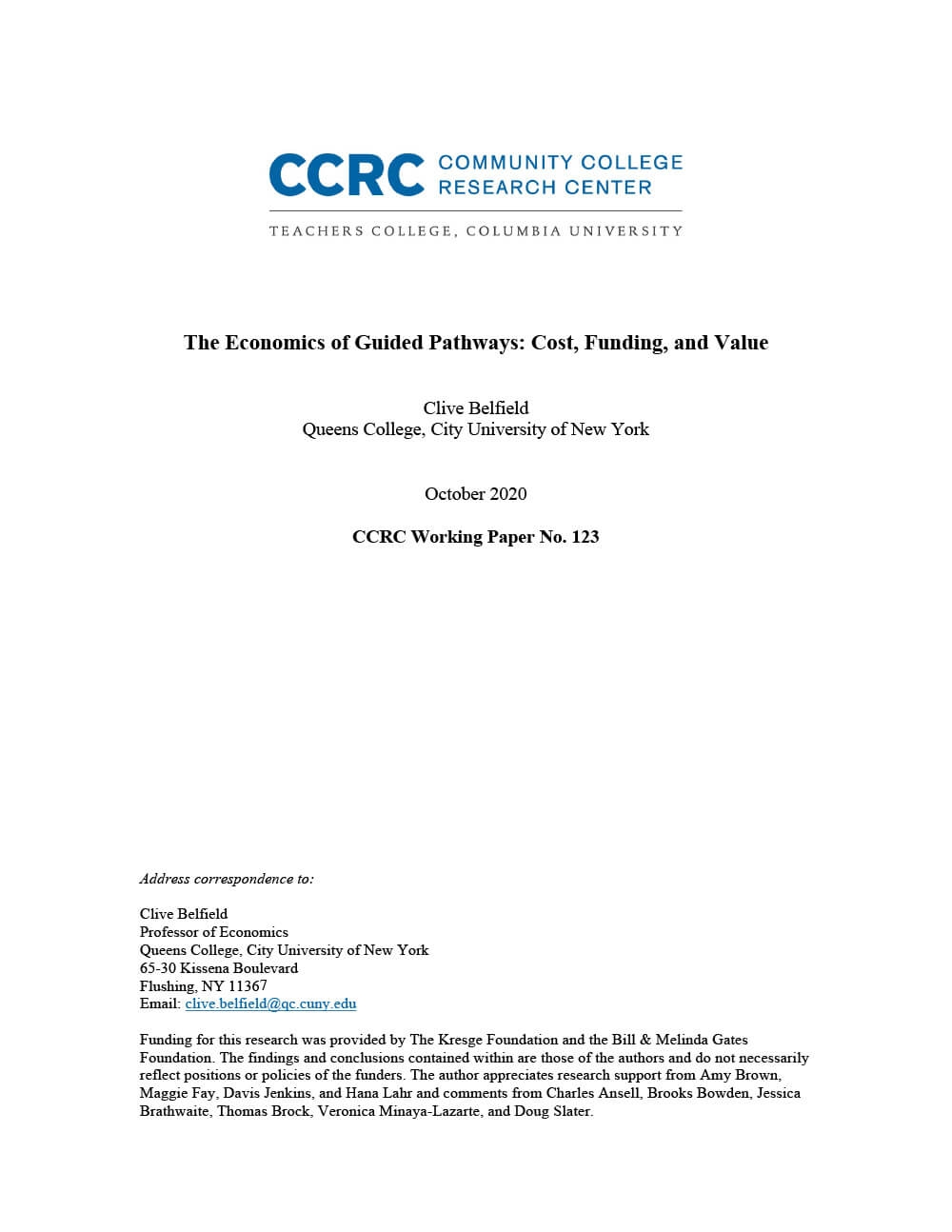
This paper is the first to investigate the costs of institution-wide reforms at community colleges. Drawing on data from 12 community colleges implementing comprehensive guided pathways reforms, the author uses the ingredients method to analyze the resources required to implement such reforms and examine their feasibility and affordability, as well as their value for students.
For a typical college with 4,000 full-time equivalent students (FTEs) that implements guided pathways over four years, the total implementation cost beyond business-as-usual operations is estimated at $450 per student each year, or $7.1 million in total, which amounts to 12% of the college’s annual budget, or approximately 3% per year. Around one third of this cost is for enhanced student advisement. Extra investments in information technology are also significant. Ongoing operating costs, primarily for student advisement and student success courses, are around $350 per FTE each year. Cost estimates vary depending on how colleges implement guided pathways, but the results are robust to alternative input prices and college characteristics. There is also some evidence of economies of scale. To finance guided pathways, colleges relied mainly on resource reallocation and efficiency gains, extra public funding, and external grants and funds. Increases in tuition/fees were modest, temporary, or delayed until after implementation; increases of just under 1% per year would suffice to support guided pathways reforms.
From the student perspective, guided pathways increases the affordability and value for money of community college. With enhanced advising, students take fewer unnecessary courses. Program mapping leads students to take the right courses both at the community college and at any transfer college. Improved advising help students access grants and in-kind services; they also assist with financial plans to pay for college. Overall, the savings these reforms allow for are likely to exceed the modest increase in tuition/fees from guided pathways.
An accompanying practitioner guide describes the resourcing decisions colleges made to implement guided pathways.
